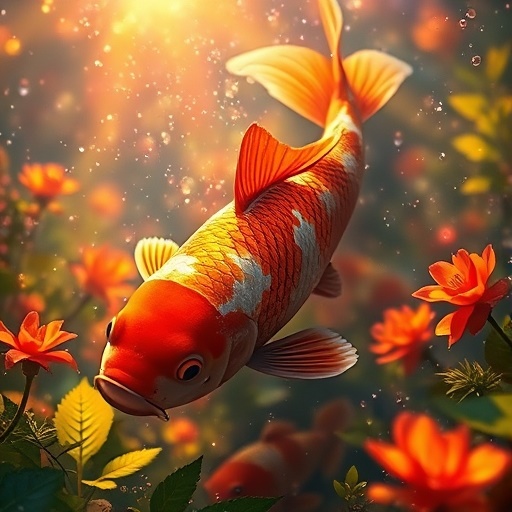Koi fish are renowned for their vibrant, eye-catching colors and graceful movements. They are often seen as symbols of good fortune and perseverance, especially in Japanese culture. However, there is more to their appearance than meets the eye. One of the most fascinating aspects of koi fish is the relationship between their age and the development of their color. The colors of koi fish evolve as they grow, influenced by factors such as age, genetics, diet, and the environment in which they live.
When koi fish are born, they typically have very pale or even translucent bodies. In their early stages of life, it can be difficult to predict what colors they will develop as they mature. However, as they begin to grow, their colors start to become more visible, and distinct patterns begin to form. For many koi, this color transformation becomes more pronounced as they reach the age of one year. At this point, certain colors, such as red, orange, or black, begin to emerge. While the colors are still in their early stages, this is when the koi fish’s future color pattern starts to take shape.
By the time koi fish reach three years of age, their color patterns are typically more established. The intensity of their colors begins to increase, and their markings become sharper and more defined. For example, a Kohaku koi, which is characterized by its white body and red markings, will see its red color become more vibrant and its white color more pronounced as it matures. This process continues as the koi grows older, with the colors becoming deeper and more vivid with each passing year.
One of the most notable changes in color development occurs when koi fish reach the age of five or six. By this time, many koi will have reached their full color potential. The red and orange colors on certain koi varieties, such as the Showa or Sanke, can become even more intense, while the white color may develop a pearlescent sheen. Older koi tend to have a more stable and refined color palette. Their hues are generally more vibrant, and the colors are more evenly distributed across their bodies. The intensity and definition of their markings are often a sign of a healthy, well-cared-for fish.
However, the relationship between age and color development is not the same for every koi. Factors like genetics, environment, and diet play crucial roles in how a koi’s colors develop. For example, koi kept in suboptimal water conditions or those fed a poor diet may not achieve their full color potential. On the other hand, koi kept in high-quality, well-maintained ponds with clean water and a proper diet are more likely to exhibit vibrant and intense colors as they mature.
The environment in which koi live also has a significant impact on their color development. Koi that are exposed to direct sunlight tend to develop more intense colors, as UV light helps stimulate the production of pigments in their skin. Similarly, koi that are raised in larger ponds or those with plenty of space to swim and grow are more likely to develop brighter colors compared to those in smaller, overcrowded environments.
In addition to environmental factors, the age of a koi also affects how long its color development continues. For some koi, color changes can continue well into their later years, with new hues or patterns appearing as they age. The coloration of koi is a lifelong process, and while their most intense colors usually appear by the age of five, their appearance can continue to evolve. This makes koi fish particularly fascinating to hobbyists, who often develop a deep connection with their fish as they watch them grow and change over time.
In conclusion, the age of koi fish is intricately linked to their color development. As koi grow older, their colors become more vibrant and refined, offering a visual display of the fish’s growth and health. The process of color development is influenced by a variety of factors, including genetics, diet, water conditions, and environmental exposure. Koi fish serve as a reminder of the beauty of natural growth and the rewarding experience of watching them mature into stunningly colorful creatures over time.

